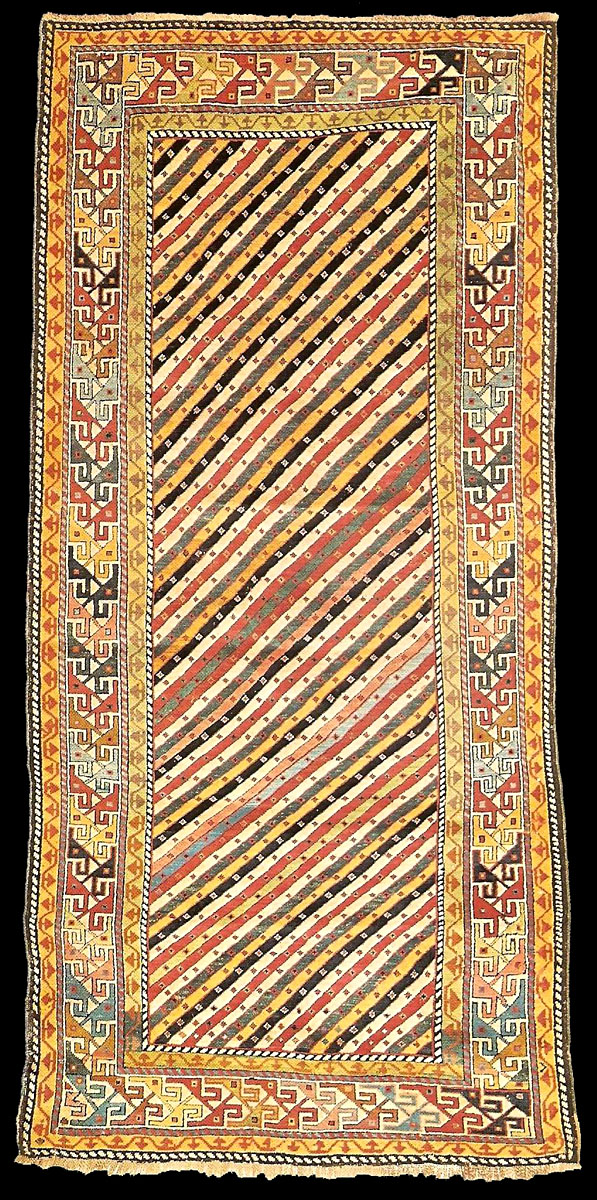|
37. DAGHESTAN
mid-19th century, 7'2" x 3'7" [m. 2.23 X 1.12]
Warp: wool
Weft: wool, two shoots after each row of knots
Knotting: Ghiordes, wool, 130 knots per square inch [2100 per dm.3]
One of the most popular designs in history has been stripes, plain, gaudy,
quiet, or vibrant. Designed to accommodate any environment, they have been
used on doth from French muslin to the most opulent of brocades.
Characteristic of the Islamic region, these stripes are not regular. The
basic pattern is black, yellow, blue, white, red, white, but this sequence
is varied three times in the top half of the rug to include pink and green.
The stripes are decorated with bicolored squares at intervals alternating
with the ones on the next stripe. The strength of the rug lies in the bright
show of many colors displayed in a controlled manner.
The main border is a variation of the dragon border in Plates 34 and 36, and
the other two borders are a very simplified version of the vine and leaf.
This piece is a fascinating design. Other areas of the Caucasus that use
stripes are the Karabagh district, where the Schuscha tribe decorates them
with botehs; the Gendje; the Shirvan, where they are sometimes used in
prayer rugs, and the Baku, where they are indicated by botehs alone (see
Plate 40). In all of these cases the stripes are on the diagonal, used as a
counterpoint against the vertical and horizontal borders. There are also
stripes that run parallel to the borders from the Baku and Kuba regions and
on runners from the Karabagh (see Plate 43).
 |

